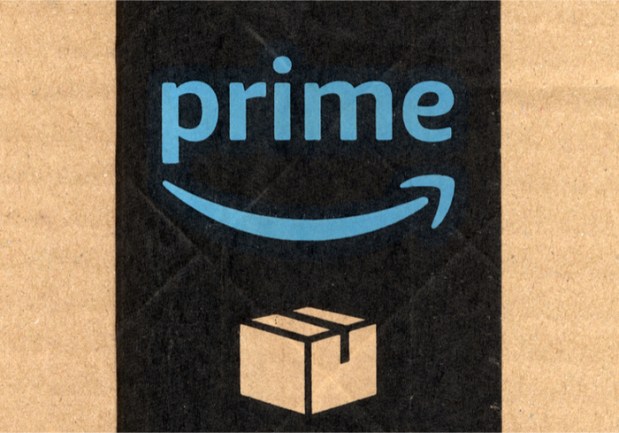Amazon Seeks New Avenues Of Growth For Amazon Prime

When Amazon launched its Prime service in 2005, its visionary chief executive had big plans to shake up eCommerce retail.
“Amazon Prime takes the effort out of ordering: no minimum purchase and no consolidating orders,” Jeff Bezos, CEO of Amazon, said in a letter posted on the company’s website in 2005. “Two-day shipping becomes an everyday experience rather than an occasional indulgence.”
At the time, Amazon faced some competition from eBay — along with traditional brick-and-mortar stores. Prime came as the company sought to prove to investors that it could increase customer loyalty with customers that were, say, intrigued by online auctions.
Since then, Amazon has become such a dominant powerhouse that other retailers have had to emulate its shipping strategies. Bezos’ self-fulfilling prophecy turned out to be right. Two-day shipping is no longer the exception for many eCommerce customers: It’s the rule.
So much so that Walmart now offers two-day shipping to compete with Amazon’s same-day delivery perk with Prime Now. Target launched its own same-day delivery service in some markets with Shipt, while Walmart did the same with Deliv.
With this increasing competition, how long can the Prime party last? As Robert Frost once wrote, “nothing gold can stay,” and, with Amazon Prime, its growth is starting to slow.
According to news from CNBC, Morgan Stanley noted in a Dec. 2017 research report that 40 percent of American consumers already have Prime memberships, which matches the same level seen in the fourth quarter.
If Prime membership is starting to plateau, according to the Wall Street firm, Amazon needs to target lower-income households and those with older consumers residing in them — two segments of the market that have historically been a small percentage of Amazon’s vast population of Prime users.
Discounted Membership
Amazon seems to have heeded Wall Street’s advice. It’s been introducing discounted Prime pricing to more people receiving government benefits.
Last week, for example, Amazon said it would now offer its Prime membership for $5.99 a month — instead of $12.99 a month (up from $10.99 a month) or $99 a year — to those on Medicaid for up to four years, The Wall Street Journal reported.
While more than half of U.S. households with internet have Prime, the program is particularly popular with wealthier consumers. And even as shopping picks up online, many lower-income consumers still shop at traditional brick-and-mortar retail stores such as Dollar General, since they can pay with a SNAP (Supplemental Nutrition Assistance Program) card or cash.
By offering discounted pricing on its memberships, Amazon is also able to attract viewers to its digital content. “They come for shipping,” Aaron Perrine, who leads the program, told the WSJ. “They stay for digital.” After all, Amazon also offers streaming of music and videos.
Last year, Amazon announced a deal on Prime — $5.99 a month instead of $10.99 a month — to U.S. residents receiving government assistance. Shoppers with an Electronic Benefits Transfer card, which is used for benefits like the Women, Infants and Children Nutrition Program, are eligible for the lower price. These customers will have to re-qualify every year for up to four years.
The New Pantry Subscription
As Amazon continues to introduce new pricing models for its Prime service, the eCommerce retailer is also focusing its attention on Prime Pantry. While customers used to pay for Prime Pantry deliveries on a per-box basis, the company is now moving toward a subscription model, CNBC reported.
Currently, Amazon charges $6 per box for Prime Pantry. Going forward, it will charge $5 for a monthly subscription. To ease the transition, the eCommerce retailer will roll out the subscription model slowly, allowing shoppers to opt out of the subscription model and instead pay $8 on a per-box basis.
Through Prime Pantry, Amazon offers non-perishable food items along with household goods, such as beauty and cleaning supplies. The service is one of many features the company promotes as fast and convenient.
More Expensive Subscriptions
Not all Prime members are getting discounts, however. For regular subscribers, the eCommerce retailer increased its monthly membership fees by nearly 20 percent, Recode reported in January.
As was mentioned previously, the monthly fee for Amazon Prime jumped from $10.99 to $12.99 in the U.S., which works out to an increase of 18 percent. On an annual basis, monthly memberships now cost consumers $156 a year. The company also raised the monthly fee for its Prime program for students, which it started last fall, from $5.49 to $6.
Despite the price increases for monthly Prime memberships, the cost of an annual membership will stay at $99 for now, with monthly Prime Video membership remaining at $8.99.
Still, for some consumers, Prime may be a better option than Amazon’s original Super Saver shipping, which required a $25 minimum order. Prime, after all, offers free shipping on eligible items without a minimum order. However, for consumers to take advantage of Prime, they have to sign up first — and that is the challenge Amazon currently faces.
